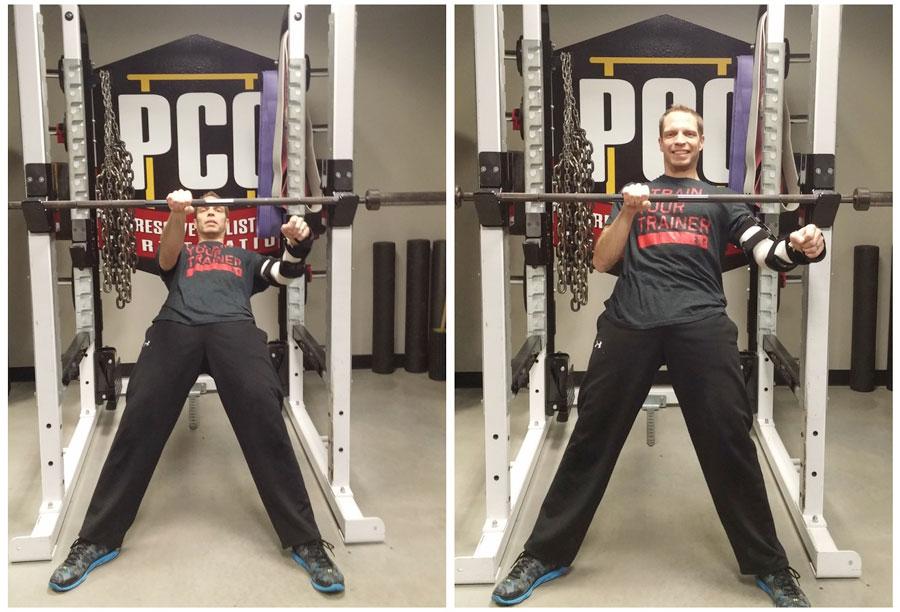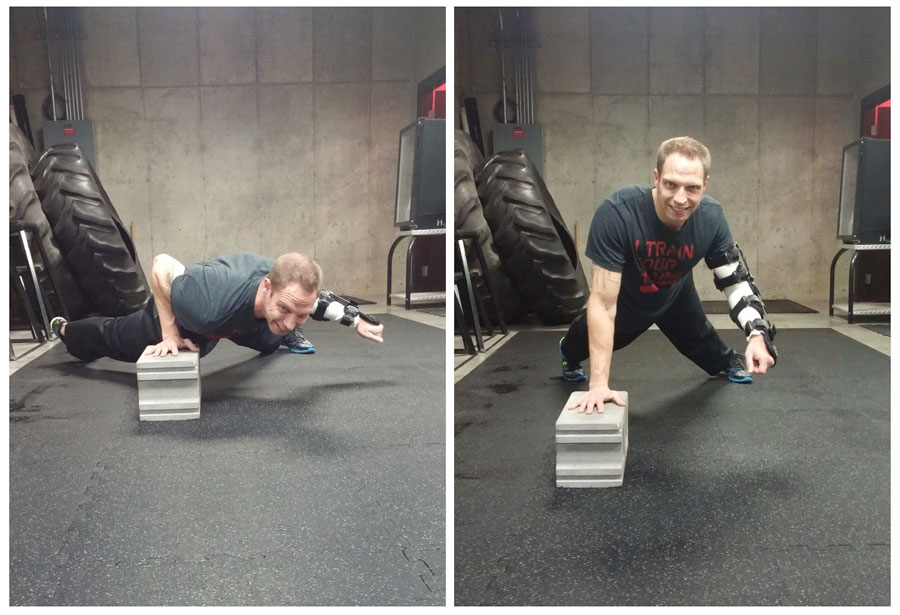
On June 8 of 2014, I turned 40. The following day I had surgery to repair a ruptured triceps in my right arm. In late August, just 3 months later I was able to pass all of the skill elements for my RKC recertification using ONLY calisthenics for training. But what happened in between those dates is where the magic of calisthenics lies.
Fitness gives me life. It helps me stay in shape so I can help out my wife around the house and keep crossing things off the seemingly never ending to-do list. Being in shape gives me the ability to play basketball with my son in the driveway, or throw soft toss to him in the batting cage. In late May when I ruptured my triceps I was no stranger to working around injuries, but it still gave me a few new opportunities. First, I was able to focus entirely on my lower body and write what turned out to be a fairly successful blog post about calisthenics leg training. Second, it forced me to start my upper body training from ground zero and really dig deeper into the Convict Conditioning progressions.
How does an advanced lifter re-teach himself one arm push-ups? I will admit, despite limited range of motion in my elbow and absolutely zero pushing strength in my right arm; I had retained most of my pulling strength. After regaining complete active full range of motion in the joint I was able to start push-ups at an incline as well as horizontal pull-ups. Pairing the pushing and pulling together gave me a chance to work on regaining my tricep strength as well as the range of motion from the pulling movements.
Despite my youthful desire to challenge myself and rush to the next progression I made sure I was able to hit 20 quality reps with each movement before moving on to the next harder step. I think this also helped strengthen the tendon as well as create movement proficiency. Eventually I was able to do 20 quality narrow push-ups on the floor and 20 wide grip pull-ups with my ankles elevated on a support bar.

The transition to a dead hang pull-up was surprisingly quick and easy, but moving to the one arm push-up proved to be a bit more challenging. To accommodate the added weight and strain on the elbow joint I had to move to incline one-arm push-ups and follow a similar rep progression back to the ground. I think it really helped practicing single arm push-ups at various heights and immediately following it with tight narrow push-ups on the floor.
I learned a couple things along the way. First, patience is everything. Don’t rush to get to the next progression until you’ve mastered the step you’re on. As Paul Wade says in Convict Conditioning, earn the right to advance to the next step. This pays dividends when you attempt the next step and find that you can actually control a few reps with quality technique instead of surviving and gutting out two or three sloppy injury risking reps. Second, most of us are not professional athletes. Yes, a lot of us think part of our identity comes from what we can do in the gym. Our true identity is created by how we are as a husband and father. My injury sucked. It took away my ability to train upper body and I lost some of my hard earned muscle mass, but that paled in comparison to not being able to play catch with my son, or help my wife carry in the groceries.
On Friday January 9th, I ruptured my bicep in the other arm. On Monday the 19th I had surgery to repair that. Click here for a photo during the repair process. Warning: Graphic medical photo. Two major injuries in six months. This time around I’m not worried about the lost training time, I’m upset that I won’t be able to go sledding with my son, or do everything my wife needs me to do. I’ll admit I’m having a hard time dealing with this one. Three months from now I know I’ll look back and see countless blessings from this, including a deeper appreciation for the pull-up progressions, but right now I’m in the storm and it’s tough to see the shore over the tall waves.

I know there are tons of people dealing with worse situations than mine; those of us in the fitness world sometimes stake too much of our identity on our physical capabilities. Twenty years from now the only thing people will remember is how you treated your family and those around you. It’s easy to forget that we work out to be healthy and so we can have a good quality of life. I may have temporarily lost the use of my arm, but I’m not going to let myself lose sight of the big picture.
***
About Corey Howard, PCC, RKC, CK-FMS: Corey Howard strives to constantly become stronger, and to help others to achieve their fitness goals. He is the owner of Results Personal Training, and can be reached at fithubby.com, resultsptonline.com or coreyhoward.com.